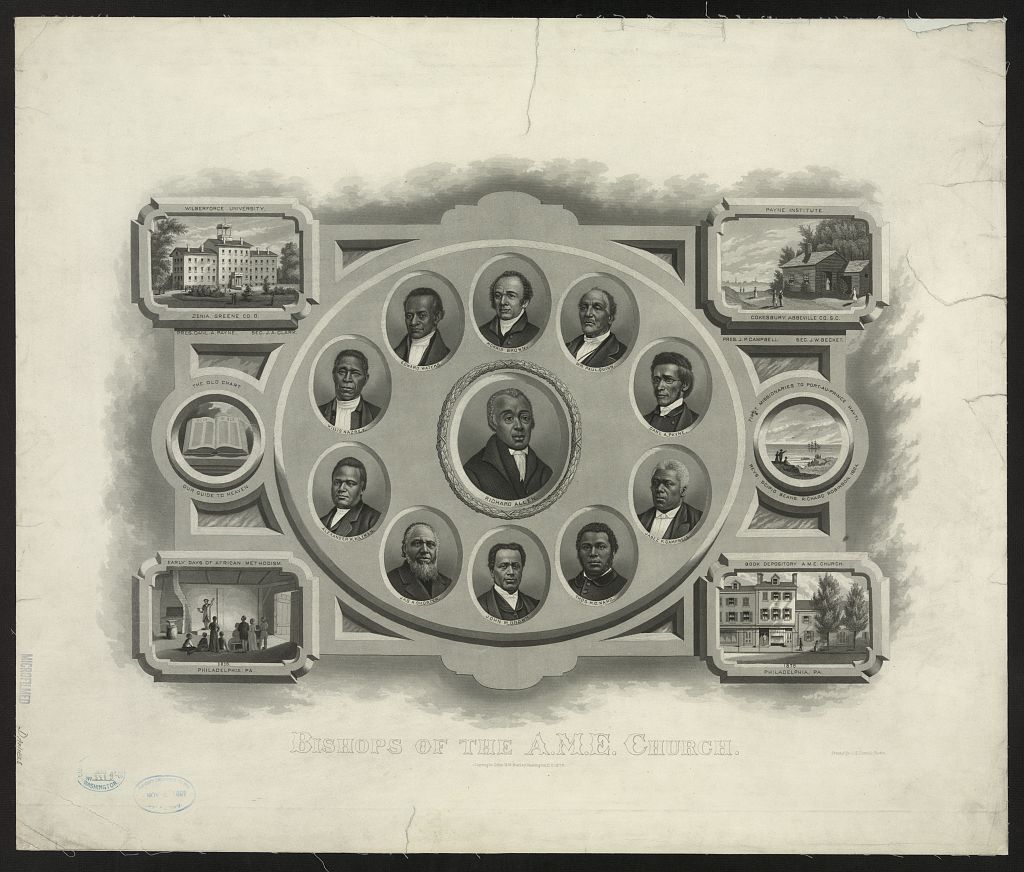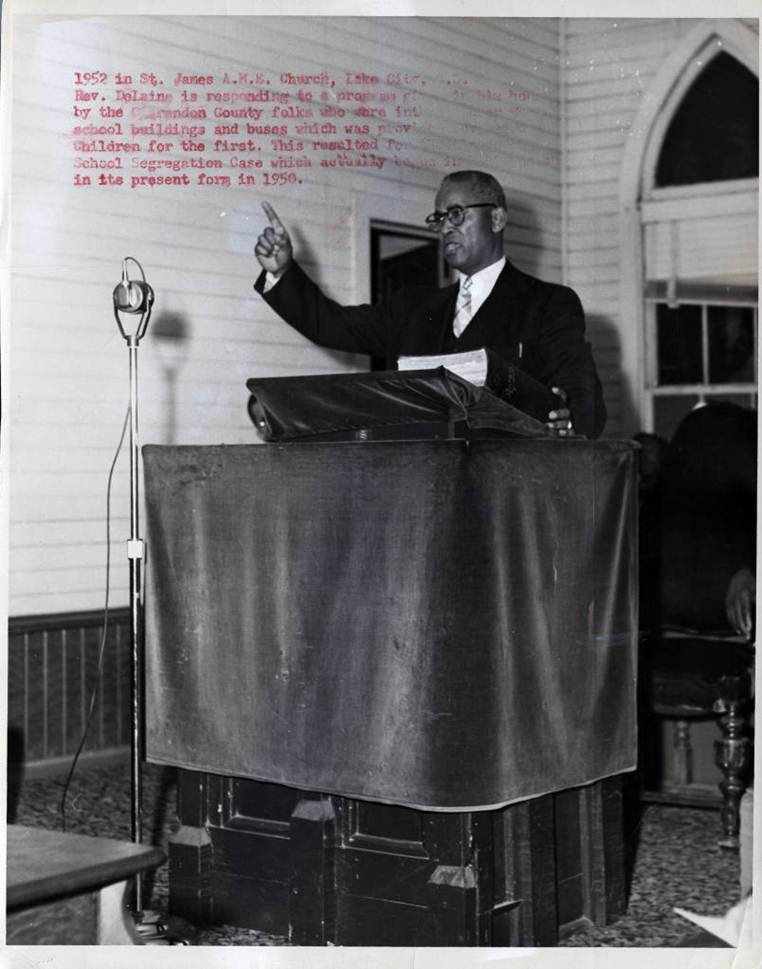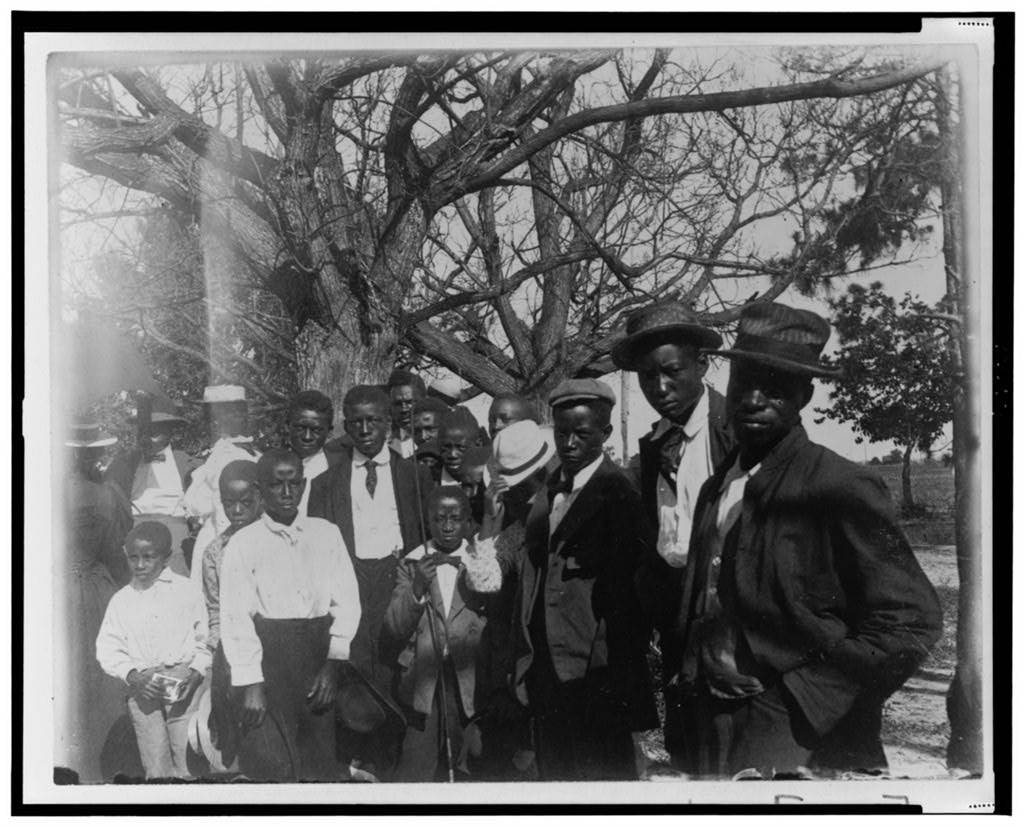
For African Americans, the church pastor has long held a special role, providing leadership above and beyond spiritual guidance:
In African-American sharecropping communities of the late nineteenth and early twentieth centuries, pastors were often the single most important community leaders, and churches were often the first buildings to be erected in the settlements. Further, in the days of Jim Crow especially, election of church leaders often gave African Americans some of their few opportunities to exercise democracy and political power. Preachers and lay leaders often learned to be effective, creative organizers, strategists and fund-raisers, particularly given the often tenuous financial condition of the churches.
Literacy in American Lives, pg. 111
During the 1950s and '60s African-American pastors put their skills as strategists and organizers to work in the civil rights movement.
Reverend Joseph A. DeLaine worked actively for civil rights in Clarendon County, South Carolina. A pastor and a teacher, he helped organize the 1949 Briggs v. Elliott lawsuit that was eventually included in the 1954 Brown v. Board of Education public school desegregation case.
As a result of his activism, DeLaine lost his job and his home, and vigilantes forced him and his family to leave the state under threat of death. He never returned to live in South Carolina.

As the pastor of Friendfield Church for many years, Reverend Moses Jenkins had the qualities of leadership common to African-American preachers.
In The Souls of Black Folk, W.E.B. Du Bois says, “The Preacher is the most unique personality developed by the Negro on American soil. A leader, a politician, an orator, a ‘boss,’ an intriguer, an idealist…,” a man who “found his function as the healer of the sick, the interpreter of the Unknown, the comforter of the sorrowing, the supernatural avenger of wrong, and the one who rudely but picturesquely expressed the longing, disappointment and resentment of a stolen and oppressed people.” (pg. 91)
This photograph of African-American men and boys dressed for church was one of 363 images compiled by W.E.B. DuBois for the "American Negro" Exhibit at the 1900 Paris Exposition.
